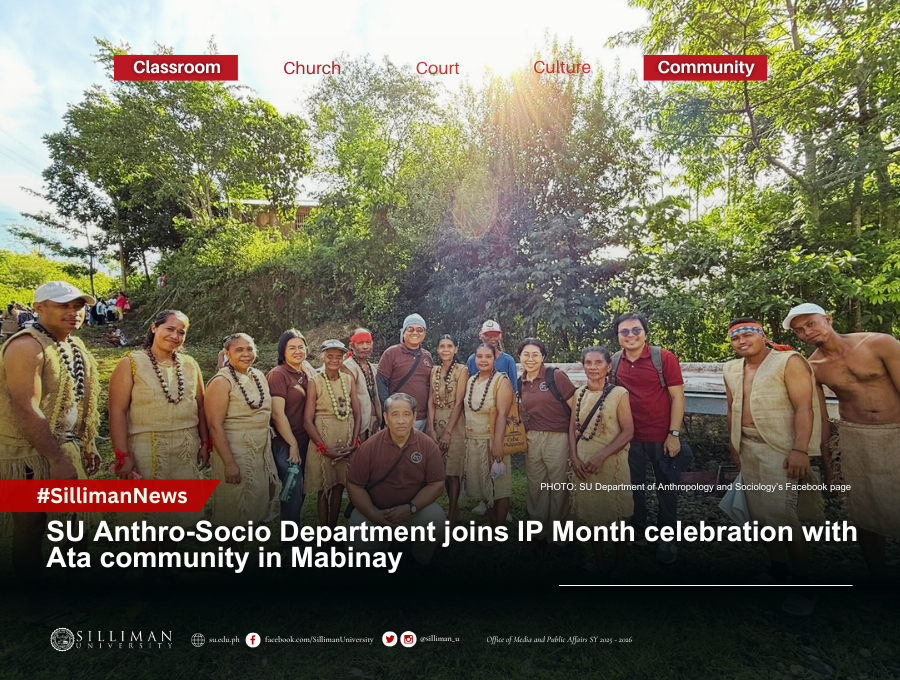
SU Anthro-Socio Department joins IP Month celebration with Ata community in Mabinay

After more than forty years, the Silliman University Department of Anthropology and Sociology reconnected with the Ata community in Barangay Canggohob, Mabinay, during the Indigenous Peoples’ Month celebration held on October 6, 2025.
With the theme, “Hinabing Kalinangan, Masaganang Kinabukasan: Pagsasakapangyarihan sa mga Katutubong Pamayanan bilang Saligan ng Likas-Kayang Kaunlaran” (Weaving Culture, Enriching Future: Empowering Indigenous Communities as the Bedrock of Sustainable Development), the Negritos, locally called Ata, held a day-long celebration that highlighted the community’s cultural heritage and traditions, participated by four IP communities: Brgy. Canggohob, Brgy. Lamdas, Brgy. Mayaposi, and Brgy. Sab-ahan. Through various competitions, the event showcased different aspects of their culture—from the cultural dances and Balak and Balitaw competitions in the morning to the Daray ug Otoan 2025 in the afternoon.
The department’s participation followed an invitation from the Ata community’s Kabubungan (tribal leader) and Barangay Councilor, Rostom Bornea, who met Silliman University Anthropology and Sociology professor Dr. Enrique G. Oracion in July 2025 during the Indigenous Peoples Health Equity Conversation (IHEC) at the University of San Agustin in Iloilo City. The encounter marked their first reconnection after more than four decades, as Oracion had previously worked with the Ata community in 1983 on an agroecosystem project led by then department chairperson, the late Dr. Rowe Cadeliña. At that time, Bornea’s father, Marcelo Bornea, served as the Ata leader.
In an article in the Dumaguete Metropost, Oracion recounted Silliman’s long history with the Negritos: “This academic tradition should not be broken. It was the Negrito studies, pioneered by Dr. Timoteo Oracion in the 1960s, that put Silliman University on the map in Philippine anthropology. A special issue of the Silliman Journal (1983) on the Negritos was also published and edited by Dr. Rowe Cadeliña, a former student of Dr. Tim Oracion.”
Among those who attended the activity were faculty members of the Department of Anthropology and Sociology, namely Chairperson Dr. Rey G. Gimena, Dr. Enrique G. Oracion, Assistant Professor Christine Batiles, Meljoe Loreto, Karla Khristine Melon, and Graduate Teaching Fellow Mark Cadungog. They returned to rekindle the department’s connection with the Ata community. As part of the department’s legacy of community engagement, this visit marks an important milestone in its continuing commitment to whole-person education, where learning goes beyond the classroom and is lived out in the field.
(With report from Karla Khristine Melon; pictures courtesy; picture courtesy of the Department of Anthropology and Sociology’s Facebook page)


